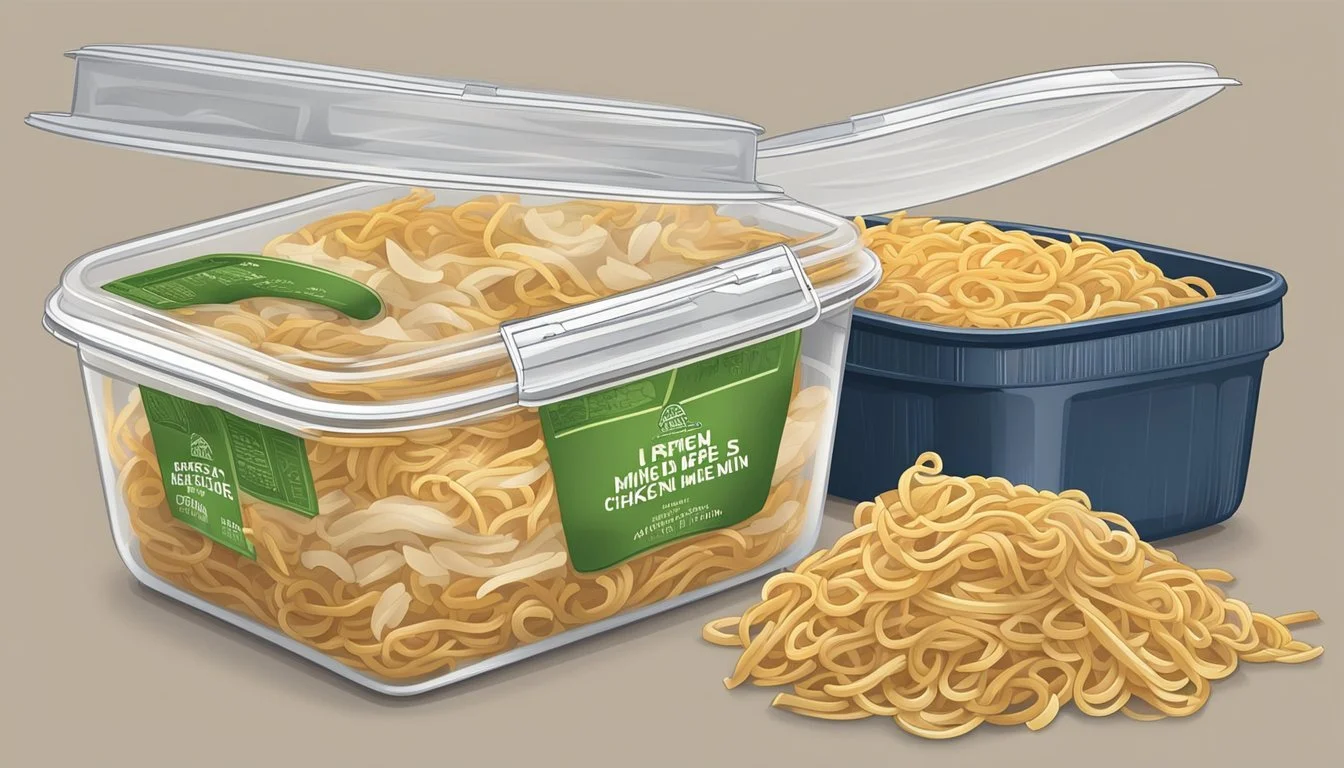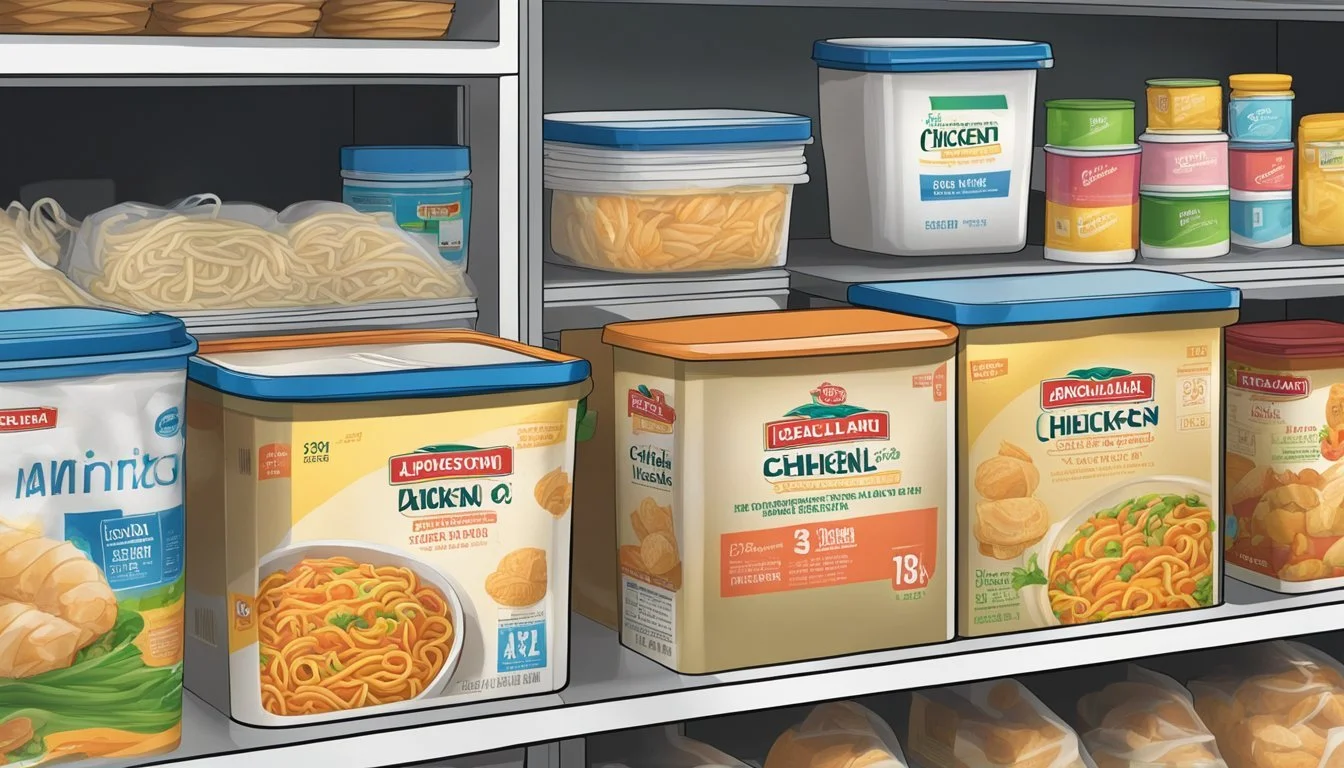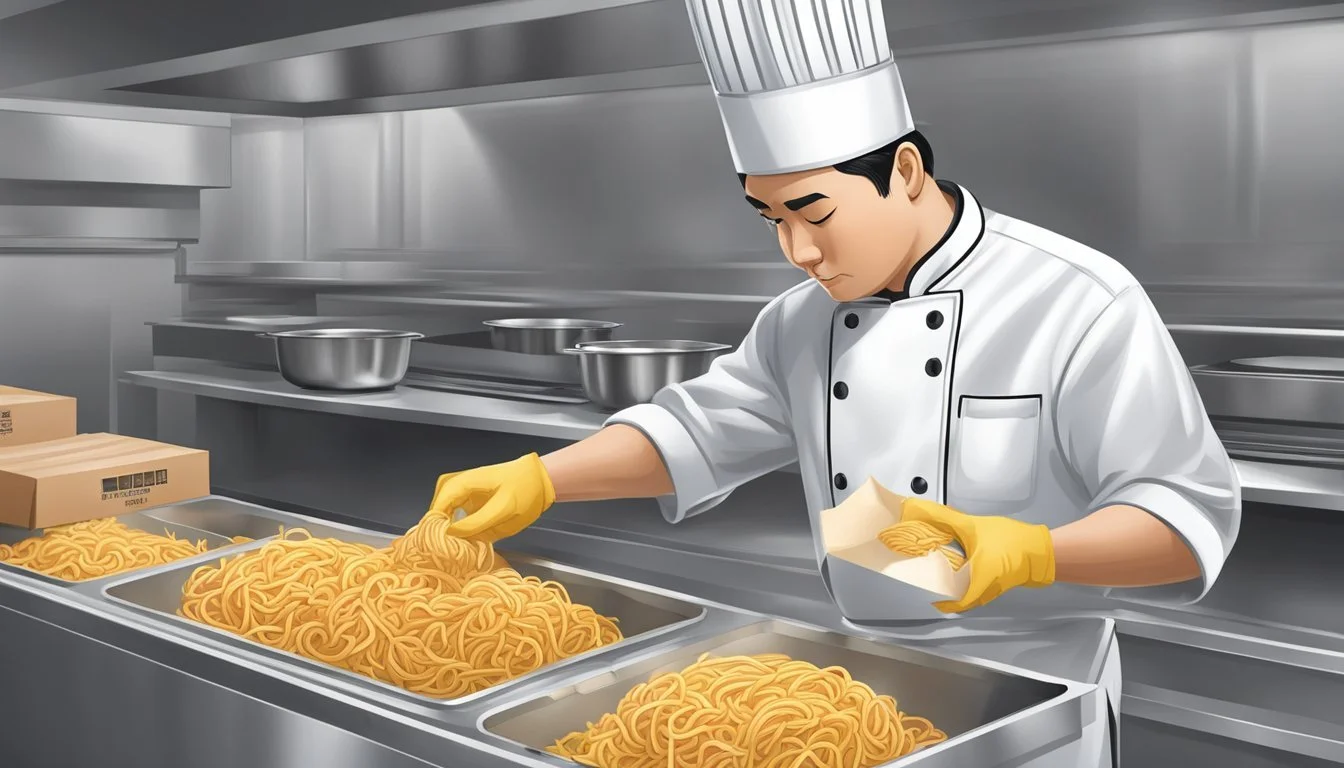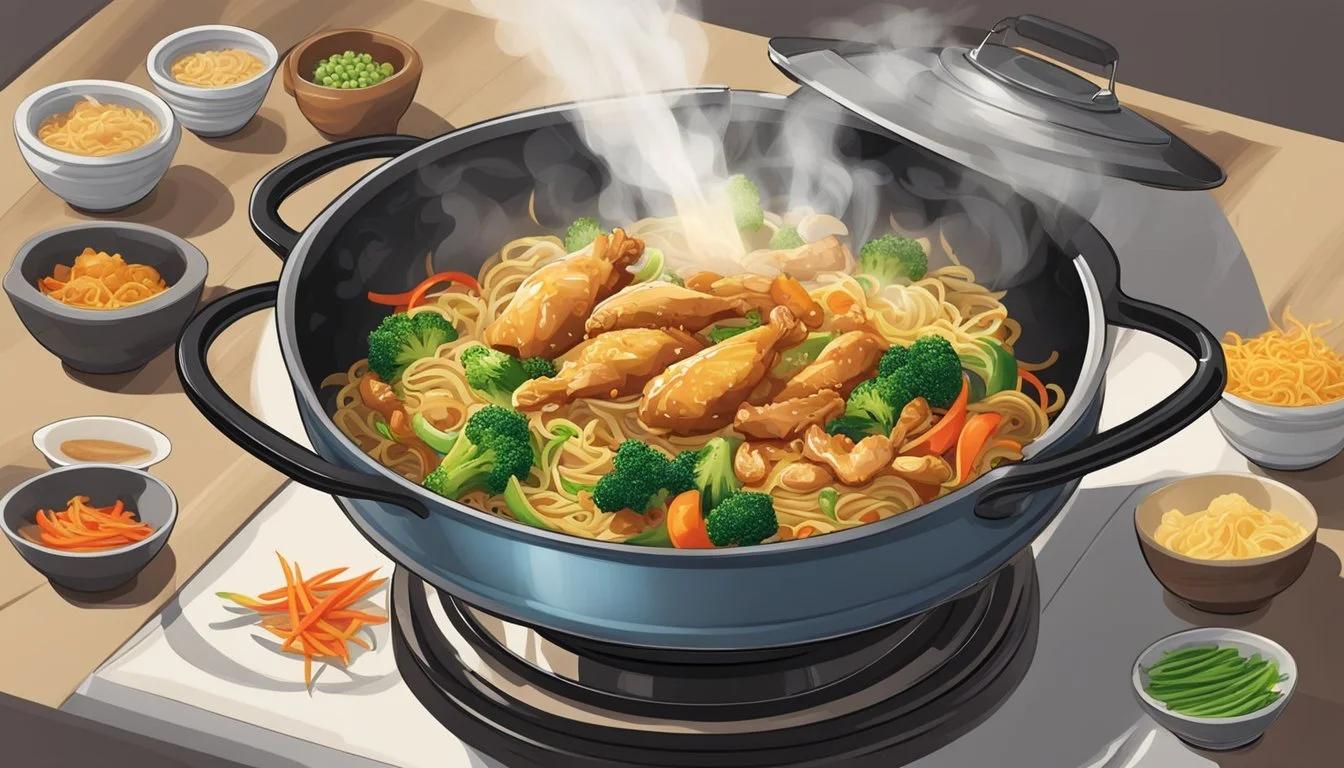How Long Does Chicken Lo Mein Last?
Storage Tips and Shelf Life
When it comes to the shelf life of Chicken Lo Mein, a popular dish in Chinese cuisine, understanding the right storage methods is crucial for maintaining its freshness and safety. Chicken Lo Mein, when stored properly in an airtight container in the refrigerator, can last 3 to 5 days. This timeframe ensures that the noodles and chicken remain flavorful and free from spoilage.
In addition to refrigeration, freezing is an effective way to extend the shelf life of your Chicken Lo Mein. By freezing at 0°F (-18°C) in airtight containers or freezer bags, the dish can be preserved for up to three months, safeguarding its quality and taste.
Consuming Chicken Lo Mein safely involves checking for any signs of spoilage, such as sour smells or color changes. This practice helps avoid any potential health risks associated with eating spoiled food. Proper storage and regular checks ensure you get to enjoy this delicious and nutritious meal anytime.
Understanding Chicken Lo Mein
Chicken lo mein is a popular Chinese dish made with wheat flour noodles, savory sauce, and a variety of meats and vegetables. This section discusses the key ingredients and nutritional values of chicken lo mein to provide a comprehensive guide.
Ingredients and Variations
Chicken lo mein primarily incorporates lo mein noodles made from wheat flour, which are tossed and stir-fried. The noodles are combined with chicken that is typically marinated for extra flavor. Vegetables like carrots, mushrooms, green onions, and bell peppers are often included, adding a variety of textures and colors.
The savory sauce consists of ingredients such as soy sauce, sesame oil, oyster sauce, and hoisin sauce. Garlic is commonly used to enhance the overall flavor profile. Variations of chicken lo mein may substitute or include other proteins like beef, shrimp, or tofu, and additional vegetables depending on regional preferences or dietary restrictions.
Nutritional Value
Chicken lo mein is a balanced dish with components from various food groups, providing a range of nutrients. An average serving contains approximately 250-400 calories. The carbohydrates from the noodles and vegetables are a significant source of energy.
The dish features protein from the chicken, contributing approximately 15-20 grams per serving. Fat content varies with around 10-15 grams, including saturated, polyunsaturated, and monounsaturated fats.
Sodium content can be high due to the use of soy sauce and other condiments, possibly reaching 800-1200 mg per serving. Additionally, the dish offers essential minerals like iron, potassium, and calcium, and a moderate amount of fiber from the vegetables.
Proper Storage Techniques
Chicken lo mein can be enjoyed for several days if stored correctly. To ensure its longevity and maintain its quality, it is essential to follow proper storage methods for both refrigeration and freezing.
Refrigerating Chicken Lo Mein
Refrigerating chicken lo mein keeps it fresh for up to 3 to 5 days. It is critical to transfer the lo mein to an airtight container immediately after cooking to prevent moisture loss and contamination.
Ensure that your refrigerator's temperature is set between 32°F (0°C) and 40°F (4°C). This temperature range inhibits bacterial growth, preserving the dish's taste and texture.
Before consuming leftovers, always check for spoilage signs such as a sour smell or discoloration. These indicators help ensure the food remains safe to eat.
Freezing and Thawing
For prolonged storage, freezing is an effective method. Cool the chicken lo mein to room temperature before freezing to prevent condensation inside the container.
Divide the lo mein into portions and place them in airtight containers or freezer bags. Label each container with the date of freezing.
When frozen properly, chicken lo mein can last up to 2 months without significant quality degradation. To prevent freezer burn, ensure containers are sealed tightly.
To thaw, transfer the container from the freezer to the refrigerator and allow it to thaw overnight. Reheat thoroughly before consuming to maintain safety and flavor.
By following these steps, chicken lo mein can be stored safely while maintaining its quality and taste.
Shelf Life Considerations
Chicken lo mein, when stored properly, can be safely consumed for a limited period. Understanding the factors that affect its freshness helps ensure safety and quality.
Optimal Shelf Life
When refrigerated, chicken lo mein lasts about 3 to 5 days. The key is to store it in airtight containers to prevent moisture loss and bacterial contamination. The ideal refrigerator temperature is between 32°F (0°C) and 40°F (4°C) to inhibit bacterial growth.
In the freezer, chicken lo mein can last up to 2 months. Before freezing, it’s important to cool the lo mein to room temperature and use airtight containers or heavy-duty freezer bags. Labeling with the date helps track freshness.
Factors Affecting Freshness
Several factors influence how long chicken lo mein remains safe to consume. Temperature is critical; maintaining a consistent cold environment slows bacterial activity. Proper refrigeration immediately after cooking extends the shelf life.
Air Temperature fluctuations can spoil the dish more quickly. Water content in fresh veggies and chicken can promote bacteria if not stored correctly. Using airtight packaging minimizes exposure to air and moisture.
Storing noodles, sauce, and toppings separately can also prevent sogginess, keeping the texture fresh longer. Immediate refrigeration of leftovers within two hours of cooking is essential to minimize bacterial growth.
Safety and Quality Maintenance
Maintaining both the safety and quality of chicken lo mein involves proper storage, identifying signs of spoilage, and reheating it correctly to avoid health risks.
Identifying Spoilage
Identifying spoilage is critical to ensure the safety of chicken lo mein. Appearance is a key factor. Fresh lo mein should have a consistent color and lack any mold or dark spots. A sour smell is another strong indicator that the food may be spoiled.
Texture also plays a role; if the noodles or chicken feel slimy, it’s better to discard the dish. Taste can be a final check, but it’s risky to taste something that already looks or smells off. Always prioritize food safety over salvaging leftovers.
Best Practices for Reheating
Reheating chicken lo mein correctly can help preserve its quality and ensure it’s safe to eat. Using a microwave is convenient, but distributing heat evenly is a challenge. Stir the lo mein halfway through to ensure even reheating. For better results, especially for larger portions, reheat in a stovetop pan or wok.
High heat should be used briefly to bring the dish to a safe temperature quickly, ideally at least 165°F (74°C). Always stir frequently to prevent burning and promote even heating. Reheating should only be done once, as repeated reheating increases the risk of bacterial growth.
Cooking Tips for Chicken Lo Mein
Cooking Chicken Lo Mein involves selecting the best ingredients and mastering effective preparation and cooking techniques to create a delicious dish. Below are detailed guidelines for ingredient selection and cooking methods.
Selecting Ingredients
Choosing fresh, high-quality ingredients is crucial for achieving the best flavor and texture in Chicken Lo Mein. Lo Mein noodles should be soft but not mushy. Fresh or dried wheat noodles are ideal. Chicken breast is often preferred for its tenderness. Alternatively, beef, pork, shrimp, or tofu can be used to vary the protein.
Vegetables like carrots, bell peppers, and napa cabbage add color and crunch. Aromatics such as garlic and ginger enhance the dish's complexity. The sauce, a mix of soy sauce, hoisin, oyster sauce, sesame oil, and a touch of sugar and salt, ties everything together.
Preparation and Cooking Techniques
Stir-frying is the primary cooking method. Heat a wok until it is extremely hot before adding oil. This ensures even cooking and prevents sticking. Cook the chicken breast or other protein until golden brown. Remove it from the wok to avoid overcooking.
Sauté the aromatics briefly to release their flavors. Add the vegetables and stir-fry until tender-crisp. Return the protein to the wok, then add the cooked noodles and sauce mixture. Stir-fry for an additional minute to blend the flavors.
Remember to avoid overloading the wok, as overcrowding can lead to steaming rather than stir-frying. Keep all ingredients prepped and ready for quick addition to the wok.
Alternatives and Dietary Considerations
For those who have dietary restrictions or are looking to make healthier choices, there are several options available to modify chicken lo mein. These can cater to vegetarian diets and allow for ingredient substitutions to suit individual tastes and nutritional needs.
Vegetarian and Vegan Options
Creating a vegetarian or vegan version of chicken lo mein involves some simple ingredient swaps. Instead of chicken, tofu serves as an excellent high-protein substitute. Tempeh and seitan are also great options for those seeking different textures.
For the sauce, ensure it’s vegan by avoiding traditional lo mein sauce that may contain oyster sauce. Use a mix of soy sauce, sesame oil, hoisin, and dark soy sauce for a rich, savory sauce. Adding vegetables like napa cabbage, bell peppers, and carrots not only boosts nutrition but also adds vibrant colors.
Substituting Ingredients
When it comes to ingredient substitutions, flexibility is key. Spaghetti or whole wheat noodles can be alternatives to traditional lo mein noodles, especially if whole grain options are preferred.
For the sauce, various liquid aminos or low-sodium soy sauce can be used to reduce salt intake. To cater to gluten-free diets, use rice noodles and a gluten-free soy sauce. Sesame oil provides a nutty flavor, and paired with some hoisin and dark soy sauce, it creates a delicious base.
Experimenting with different proteins such as shrimp, pork, or beef instead of chicken can also provide variety while maintaining the dish’s core flavors.








